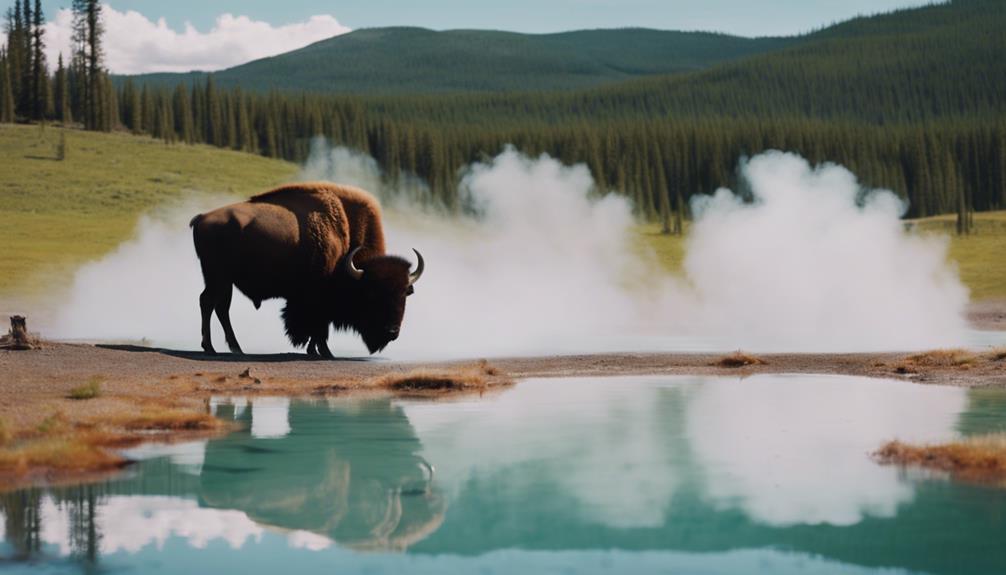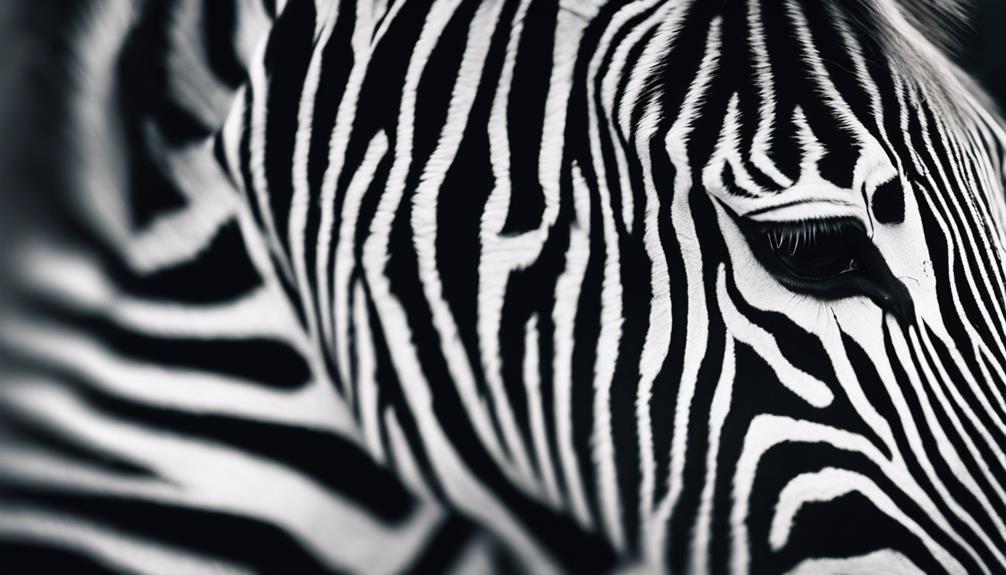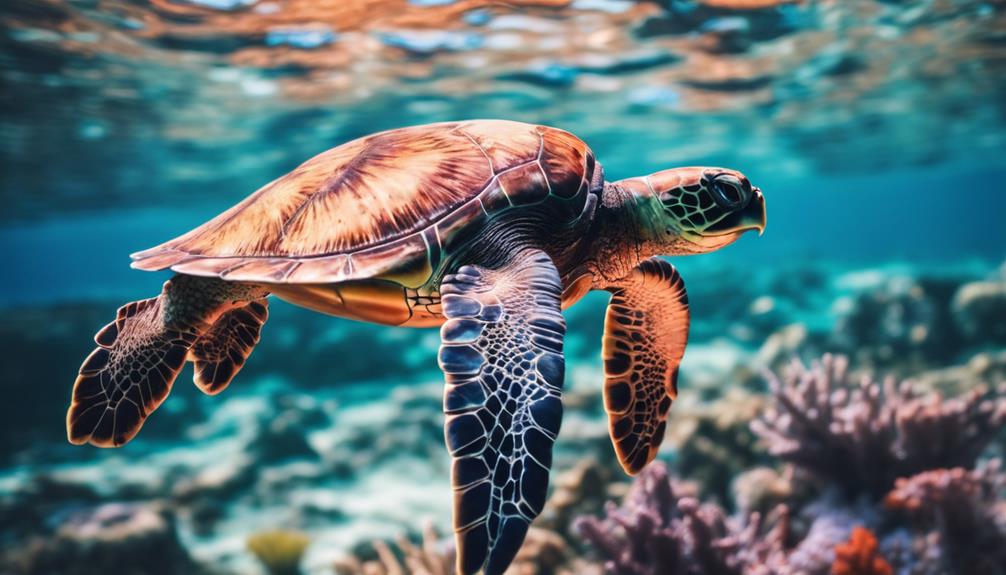Are you ready to dive into the fascinating world of zebra sharks? Get ready to be amazed by their incredible adaptations, unique behavior, and interesting facts.
In this article, we will take you on an adventure through the life of a zebra shark. From their distinctive black and white stripes to their playful nature, these magnificent creatures are sure to capture your imagination.
So join us as we explore the secrets of the zebra shark and discover why they are truly one-of-a-kind.
Key Takeaways
- Zebra sharks have a unique striped pattern and elongated body.
- They are oviparous, laying eggs instead of giving birth to live young.
- Zebra sharks prefer warm coastal waters with temperatures between 75 and 82 degrees Fahrenheit.
- They have a diverse diet that includes mollusks, crustaceans, and small fish.
Anatomy of a Zebra Shark
You’ll be amazed at the unique anatomy of a zebra shark. With its striking striped pattern and elongated body, the zebra shark possesses an intriguing set of features that make it truly remarkable.
One of its most distinctive characteristics is its mouth, which is located on the underside of its head. This adaptation allows the zebra shark to feed on bottom-dwelling organisms such as mollusks and crustaceans with ease. Additionally, this species possesses a long tail that aids in swimming and maneuvering through coral reefs.
When it comes to reproduction, the zebra shark follows an interesting reproductive cycle. Unlike other sharks, they are oviparous, meaning that they lay eggs instead of giving birth to live young. The female zebra sharks deposit their eggs in protected areas such as coral reefs or rocky crevices, providing a safe environment for them to develop.
Understanding the anatomy and reproductive cycle of these fascinating creatures not only deepens our connection with nature but also reminds us of our own intricate place within this diverse ecosystem.
Zebra Shark Habitat
Welcome to the fascinating world of zebra sharks! In this discussion, we will delve into the ideal habitat conditions for these magnificent creatures.
We will explore the threats that they face in their natural environment and discover the significant efforts being made to conserve their precious habitats.
Get ready to embark on a journey that highlights the importance of creating an ideal home for these incredible beings. We will also address the challenges they encounter and the innovative solutions being implemented to protect them.
Ideal Habitat Conditions
The zebra shark prefers warm coastal waters for its ideal habitat conditions. These magnificent creatures thrive in water temperatures between 75 and 82 degrees Fahrenheit, providing them with the perfect environment to grow and flourish. Not only do they require ideal temperature conditions, but zebra sharks also depend on high-quality water for their survival. The clarity of the water is crucial as it allows them to hunt effectively and navigate their surroundings with ease. To give you a clearer picture of their preferred habitat, here is a table that showcases the ideal temperature range and required water quality for these remarkable sharks:
| Ideal Temperature | Water Quality |
|---|---|
| 75-82°F | Clear and pristine |
With these specific requirements met, the zebra shark finds solace in its habitat, ensuring its place as an integral part of our diverse marine ecosystem.
Threats to Habitat
One of the main threats to the zebra shark’s habitat is human activities such as pollution and overfishing. Our actions have a profound impact on these majestic creatures and their delicate ecosystem.
With climate change wreaking havoc on marine environments, it is crucial for us to take responsibility for our actions. Imagine a world where we prioritize conservation efforts, working together to protect the habitats of these incredible beings.
By reducing pollution and implementing sustainable fishing practices, we can ensure the survival of not only the zebra sharks but also countless other marine species that rely on these habitats for their existence.
Let us come together as stewards of our planet, taking action today to secure a brighter future for all living beings in this interconnected web of life.
Habitat Conservation Efforts
Take a moment to consider the impact of your actions on habitat conservation efforts for marine species.
In order to protect and preserve our beautiful oceans and the incredible creatures that inhabit them, it is crucial that we actively engage in community involvement and support the establishment of marine protected areas.
By coming together as a collective force, we can create spaces where marine life can flourish, free from harmful disturbances and human activities.
Imagine a future where vibrant coral reefs thrive, sea turtles navigate freely, and majestic whales migrate undisturbed through vast stretches of protected waters.
Through community engagement initiatives, such as beach clean-ups, educational programs, and sustainable fishing practices, we can build a sense of belonging among people from all walks of life who share a common goal – safeguarding our precious marine habitats for generations to come.
Zebra Shark Reproduction
Zebra sharks reproduce through a process called ovoviviparity. This unique reproductive strategy is fascinating and showcases the intricate mating behavior of these majestic creatures.
Here are some interesting facts about zebra shark reproduction:
- Female zebra sharks can store sperm for an extended period, allowing them to fertilize their eggs when conditions are ideal.
- After mating, the female zebra shark develops eggs inside her body.
- These eggs hatch internally, and the young ones are eventually born as fully-formed pups.
- Zebra sharks give birth to live young ones, which makes them different from other shark species that lay eggs.
The reproductive strategies of zebra sharks demonstrate their adaptability and resilience in ensuring the survival of their species. By understanding and appreciating these incredible creatures’ mating behavior, we can develop effective conservation efforts to protect their populations for future generations.
Zebra Shark Diet
Are you curious about what the zebra shark loves to eat? Well, let’s dive into a discussion on its preferred food sources, dietary adaptations, and behaviors.
The zebra shark has a diverse palate, enjoying a menu that includes mollusks, crustaceans, and small fish. Its unique dietary adaptations allow it to hunt for prey in various ways, such as using its long snout to sniff out hidden meals.
Preferred Food Sources
The zebra shark’s preferred food sources include crustaceans, mollusks, and small fish. These creatures have fascinating feeding habits and dietary preferences that set them apart in the underwater world. Here are some interesting facts about their preferred food sources:
- Crustaceans: Zebra sharks enjoy feasting on delicious crabs, lobsters, and shrimp. Their sharp teeth make easy work of cracking through the tough exoskeletons.
- Mollusks: From snails to clams, zebra sharks relish the taste of various mollusks. They use their powerful jaws to crush shells and savor the soft flesh within.
- Small Fish: These agile predators hunt down smaller fish like anchovies and herring. With their streamlined bodies, they swiftly swim through the ocean depths in search of a tasty meal.
- Bonus Fact: Zebra sharks are known to use suction feeding techniques to capture prey efficiently.
As you delve into the world of zebra sharks’ preferred food sources, you will discover their unique feeding habits and diverse dietary preferences that make them truly remarkable creatures belonging to our mesmerizing oceans.
Dietary Adaptations and Behaviors
As you explore the dietary adaptations and behaviors of these fascinating creatures, you’ll be amazed by their ability to adapt to different food sources and their unique feeding strategies. Zebra sharks have diverse dietary preferences, which allow them to thrive in various environments. Their feeding strategies are both efficient and captivating.
One of the most remarkable aspects of zebra sharks is their ability to consume a wide range of prey items. They are known to feed on crustaceans, mollusks, small fish, and even sea snakes. This flexibility in their diet ensures that they can find sustenance in different ecosystems.
To further understand the dietary adaptations of zebra sharks, let’s take a look at their feeding strategies:
| Feeding Strategy | Description |
|---|---|
| Suction Feeding | Zebra sharks use suction to draw in prey items towards their mouths. This method allows them to catch agile and elusive prey such as small fish or shrimps. |
| Bottom Foraging | These fascinating creatures also employ a bottom foraging strategy where they search for hidden prey within sandy or muddy substrates using sensory organs located on their snouts called ampullae of Lorenzini. |
These unique feeding strategies highlight the versatility and resourcefulness of zebra sharks when it comes to obtaining food. It is truly remarkable how these creatures have adapted over time to survive and flourish in diverse marine habitats.
Zebra Shark Behavior
You’ll be fascinated to learn about the unique behavior of zebra sharks. These charismatic creatures exhibit a range of interesting behaviors, both in their feeding habits and social interactions. Here are some captivating facts about zebra shark behavior:
- Zebra Shark Feeding: They have a distinctive method of foraging called ‘pulse feeding,’ where they suck in water and food through their mouths and then expel it out through their gills. This helps them capture small prey like crabs and mollusks.
- Social Behavior: Zebra sharks are generally solitary animals, but during mating season, they gather in groups known as aggregations. These gatherings create a sense of community among the sharks and allow them to find suitable mates.
- Courtship Rituals: Male zebra sharks engage in courtship rituals like biting the female’s pectoral fins or following her closely. These behaviors help establish dominance and demonstrate readiness for mating.
- Communication: Zebra sharks communicate using body language, such as arching their backs or shaking their heads vigorously. This non-verbal communication helps them convey their intentions or assert dominance over others.
The remarkable behavior displayed by zebra sharks showcases nature’s intricate beauty and highlights the importance of understanding these fascinating creatures for conservation efforts.
Zebra Shark Life Cycle
Have you ever wondered how zebra sharks reproduce and mate?
In this discussion, we will explore the fascinating life cycle of these majestic creatures, from the early stages of egg development to their incredible growth and metamorphosis.
Get ready to dive deep into the world of zebra sharks and discover the wonders of their reproductive journey.
Reproduction and Mating
The zebra shark reproduces through internal fertilization, with the male transferring sperm to the female’s oviducts. This fascinating courtship behavior is just one of the reproductive strategies employed by these majestic creatures. Dive into the world of zebra sharks and discover their remarkable ways of ensuring survival.
- Courtship Behavior:
- Male zebra sharks engage in elaborate courtship displays to attract females.
- They swim in tight circles around potential mates, showcasing their strength and agility.
- Males also use their tails to nudge the females, signaling their interest and readiness for mating.
- Reproductive Strategies:
- Female zebra sharks can store sperm for extended periods, allowing them to fertilize eggs over time.
- Zebra sharks are oviparous, meaning they lay eggs rather than giving birth to live young.
Witnessing these intricate courtship rituals and understanding their reproductive strategies adds another layer of awe-inspiring beauty to the world of zebra sharks. Immerse yourself in this extraordinary species and experience a sense of belonging within nature’s grand tapestry.
Egg Development Stages
As you watch the egg development stages, you’ll be amazed by the intricate process that unfolds within each tiny zebra shark embryo. From the moment of egg fertilization, a remarkable journey begins.
The zebra shark’s embryonic development is a marvel to behold. As the embryo grows, it undergoes incredible transformations. Its cells divide and multiply, forming organs and tissues with precision and purpose. The developing shark starts to take shape, its body gradually forming distinct features such as fins and a tail.
Inside the protective confines of its egg, this tiny creature is preparing for life in the vast ocean. It’s a testament to nature’s ingenuity and adaptability. Witnessing this miraculous process evokes a sense of wonder and belonging to something greater than ourselves—a reminder of our interconnectedness with all living beings on this planet.
Growth and Metamorphosis
Watching the zebra shark embryo undergo growth and metamorphosis is truly a fascinating experience. As you observe this remarkable transformation, you can’t help but feel a sense of wonder and awe.
The stages of growth are filled with incredible physical changes that showcase the beauty of nature’s design. Here are some key highlights to enjoy:
- Rapid Cell Division: Witness the embryo multiplying rapidly, forming the building blocks for its future form.
- Formation of Gills: Marvel at how gill slits develop, allowing the embryo to extract oxygen from the water.
- Body Segmentation: Notice how distinct body segments start to emerge, setting the stage for a unique patterned appearance.
- Tail Development: Delight in watching the tail grow longer and stronger, preparing it for an aquatic life.
As you immerse yourself in this extraordinary journey, you can’t help but feel connected to the wonders of life and find your own place within it.
Zebra Shark Conservation Status
Did you know that zebra sharks are classified as a vulnerable species by the International Union for Conservation of Nature?
The zebra shark population has been declining rapidly due to various factors such as habitat destruction, overfishing, and climate change.
It is crucial that we take immediate action to protect these incredible creatures and ensure their survival for future generations.
Innovative conservation strategies need to be implemented, focusing on protecting their habitats, regulating fishing practices, and raising awareness about the importance of preserving biodiversity in our oceans.
By working together, we can make a difference and secure a brighter future for zebra sharks.
Let’s join hands in this noble cause and create a world where these majestic creatures thrive and belong.
Zebra Shark Threats
You should be aware that habitat destruction, overfishing, and climate change pose significant threats to the zebra shark population. These majestic creatures are facing numerous challenges that require urgent attention.
- Habitat Destruction: The degradation of coral reefs, mangroves, and seagrass beds disrupts the zebra sharks’ natural habitats and limits their ability to find food and reproduce.
- Overfishing: Unsustainable fishing practices, such as using destructive gear or targeting zebra sharks for their meat or fins, can decimate their populations rapidly.
- Climate Change: Rising sea temperatures and ocean acidification impact the delicate balance of marine ecosystems, affecting the availability of prey species for zebra sharks.
To ensure the survival of these magnificent creatures, we need to take action now. Zebra shark conservation efforts must focus on preserving critical habitats, implementing sustainable fishing practices, and mitigating the effects of climate change.
Zebra Shark Adaptations
Take a moment to appreciate how zebra sharks have developed unique adaptations that allow them to thrive in their environment.
These incredible creatures have evolved specialized feeding mechanisms that make them highly efficient hunters. With their long, flat snouts and strong jaws, they are able to root around the sandy ocean floor in search of small crustaceans and mollusks, using suction to capture their prey.
Their camouflaged bodies also play a crucial role in their survival. The distinctive pattern of stripes helps them blend into the surrounding coral reefs and seagrass beds, making it easier for them to ambush unsuspecting prey while remaining hidden from potential predators.
This remarkable combination of feeding adaptations and camouflage allows zebra sharks to belong seamlessly within their underwater ecosystem, ensuring their continued success as apex predators.
Zebra Shark Interesting Facts
It’s fascinating to learn about the unique and impressive characteristics of zebra sharks. These remarkable creatures possess intriguing mating behavior and feeding patterns that will leave you in awe. Here are some interesting facts about zebra sharks:
- Zebra shark mating behavior: Unlike most sharks, zebra sharks engage in a form of internal fertilization called oviparity. The female lays eggs, which are then fertilized by the male.
- Zebra shark feeding patterns: These majestic creatures have a diverse diet consisting of mollusks, crustaceans, and small fish. They use their long, slender bodies to glide effortlessly through coral reefs in search of food.
- Visionary hunting techniques: Zebra sharks showcase an innovative hunting technique known as suction feeding. They create negative pressure within their mouths to suck up prey from the ocean floor.
- Influential role in maintaining marine ecosystems: By controlling populations of reef-dwelling organisms like sea urchins and crabs, zebra sharks play a vital role in preserving the delicate balance of coral reef ecosystems.
Discovering these incredible aspects of zebra shark biology is not only educational but also inspires a sense of belonging to our interconnected world.
Zebra Shark Conservation Efforts
Conservation efforts for zebra sharks are essential in preserving their population and protecting their natural habitats. These majestic creatures, with their beautiful striped patterns, play a crucial role in maintaining the balance of marine ecosystems. By implementing effective conservation strategies, we can ensure that future generations will have the opportunity to witness the awe-inspiring beauty of these gentle giants.
To truly understand the importance of zebra shark conservation, let’s take a moment to reflect on the impact of our actions. Consider this table:
| Actions | Impact on Zebra Shark Population | Impact on Conservation Efforts |
|---|---|---|
| Overfishing | Decreases population size | Hinders conservation efforts |
| Habitat destruction | Disrupts breeding grounds | Limits conservation effectiveness |
| Pollution | Harms health and reproduction | Diminishes success of conservation programs |
As stewards of our planet, we have a responsibility to protect these magnificent creatures and their habitats. Together, we can create a future where zebra sharks thrive, ensuring not only their survival but also the preservation of our shared natural heritage. Let us unite in our commitment to zebra shark conservation and work towards a world where they can flourish for generations to come.
Frequently Asked Questions
How Long Does a Zebra Shark Live?
Zebra sharks, known for their unique patterns, have a lifespan of up to 30 years. These fascinating creatures inhabit warm tropical waters and can be found in coral reefs and sandy areas.
Are Zebra Sharks Dangerous to Humans?
Zebra sharks are not typically aggressive towards humans, so you don’t need to worry about them being dangerous. In the wild, their main predators are larger sharks and possibly crocodiles.
How Many Babies Does a Zebra Shark Have at Once?
Zebra sharks have a unique reproductive strategy. They are oviparous, meaning they lay eggs. During zebra shark pregnancy period, females can lay up to 50 eggs at once, ensuring the survival of their species.
What Is the Average Size of a Fully Grown Zebra Shark?
The average weight of a fully grown zebra shark is around 330 pounds. These fascinating creatures have an interesting reproductive behavior, giving birth to live young. You’ll be amazed by their size and reproductive abilities.
How Fast Can a Zebra Shark Swim?
You’ll be amazed by how fast a zebra shark can swim! It’s an impressive predator in the ocean, utilizing its speed to catch prey. Additionally, their migration patterns are fascinating to observe.
Conclusion
Congratulations on learning all about the fascinating zebra shark!
With its unique striped pattern and long, graceful body, this magnificent creature is truly a marvel of nature.
From its ability to adapt to various habitats to its interesting reproductive behavior, the zebra shark continues to captivate researchers and conservationists alike.
By understanding the threats it faces and supporting conservation efforts, we can ensure that future generations will have the privilege of witnessing these incredible creatures in their natural habitat.
So let’s join together in protecting this extraordinary species and preserving our oceans for years to come!





